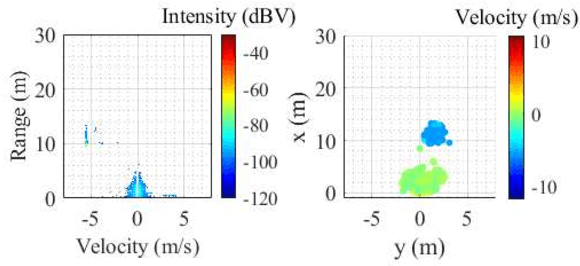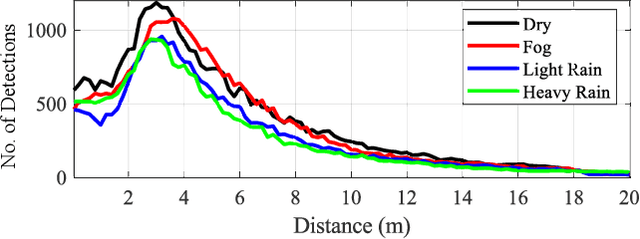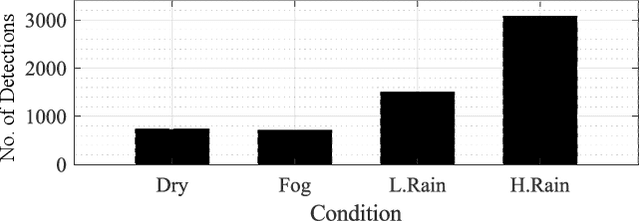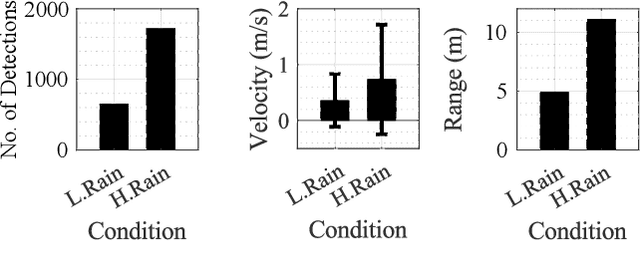Fatih Sezgin
Predicting the Influence of Adverse Weather on Pedestrian Detection with Automotive Radar and Lidar Sensors
May 21, 2024Abstract:Pedestrians are among the most endangered traffic participants in road traffic. While pedestrian detection in nominal conditions is well established, the sensor and, therefore, the pedestrian detection performance degrades under adverse weather conditions. Understanding the influences of rain and fog on a specific radar and lidar sensor requires extensive testing, and if the sensors' specifications are altered, a retesting effort is required. These challenges are addressed in this paper, firstly by conducting comprehensive measurements collecting empirical data of pedestrian detection performance under varying rain and fog intensities in a controlled environment, and secondly, by introducing a dedicated Weather Filter (WF) model that predicts the effects of rain and fog on a user-specified radar and lidar on pedestrian detection performance. We use a state-of-the-art baseline model representing the physical relation of sensor specifications, which, however, lacks the representation of secondary weather effects, e.g., changes in pedestrian reflectivity or droplets on a sensor, and adjust it with empirical data to account for such. We find that our measurement results are in agreement with existent literature related to weather degredation and our WF outperforms the baseline model in predicting weather effects on pedestrian detection while only requiring a minimal testing effort.
Safe Autonomous Driving in Adverse Weather: Sensor Evaluation and Performance Monitoring
May 02, 2023



Abstract:The vehicle's perception sensors radar, lidar and camera, which must work continuously and without restriction, especially with regard to automated/autonomous driving, can lose performance due to unfavourable weather conditions. This paper analyzes the sensor signals of these three sensor technologies under rain and fog as well as day and night. A data set of a driving test vehicle as an object target under different weather conditions was recorded in a controlled environment with adjustable, defined, and reproducible weather conditions. Based on the sensor performance evaluation, a method has been developed to detect sensor degradation, including determining the affected data areas and estimating how severe they are. Through this sensor monitoring, measures can be taken in subsequent algorithms to reduce the influences or to take them into account in safety and assistance systems to avoid malfunctions.
 Add to Chrome
Add to Chrome Add to Firefox
Add to Firefox Add to Edge
Add to Edge